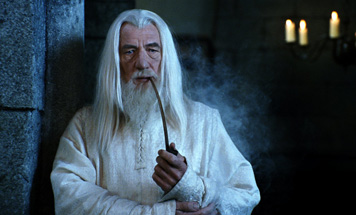Box Office - Decade at a Glance: September - December 2003
By Michael Lynderey
September 24, 2009
October
Following September's example, October 2003 delivered a series of well-received high-grossers. First, there was much-beloved comedy The School of Rock, which opened with $19 million, finished with $81 million, and turned Jack Black into an A-list comedy star in the process. Next, the weekend of October 10th brought out two of the year's best films, and they weren't shabby grossers, either. The first, dark drama Mystic River, began the current incarnation of Clint Eastwood as director of meticulously-reviewed, Academy Award-nominated dramas; it also gave Sean Penn and Tim Robbins Oscar-winning roles, and cleaned up at the box office, with $90 million by awards season's end. The second of the week's films was Kill Bill: Volume 1, a $70 million-grossing, glossily entertaining return to grandeur by Quentin Tarantino. Aside from re-establishing Uma Thurman as a star, Kill Bill made an inescapable and thorough mark on the popular culture of the decade, and left the world hungering for Volume 2. After this fall, both Rodriguez and Tarantino were cool again.
October 17th gave us the remake of The Texas Chainsaw Massacre. I would point to the release of this film, and that of The Ring a year before it, as the two most influential events in the horror genre of the 2000s. The previous entry in the franchise, Texas Chainsaw Massacre: The Next Generation, had a fleeting release in the mid 1990s, before being left to its current status as trivia (it starred both Matthew McConaughey and Renee Zellweger as tormenter and tormentee, respectively, and so I always thought the two should re-team for a romantic comedy). Buoyed by a charming little trailer, the Texas Chainsaw remake wiped away all trace of its predecessors, and broke out big with a $28 million opening and $80 million total. While New Line's earlier remake, Willard, failed badly in March, the Chainsaw re-imagining showed the studios that remaking the horror films of the '70s and '80s could potentially prove very lucrative indeed - and so they'd do exactly that, over, and over, and over again. Moreso, the film's emphasis on torture and gruesome violence re-ignited that particular element in the horror genre, and directly announced that the torture porn film had arrived. Also, while the aforementioned The Ring brought to fore all those watered-down PG-13 films, Texas Chainsaw inspired the co-existing wave of hard-R horror releases. Two extremes, as it were, and both reigned supreme 'till decade's end, at the least.
October 24th brought out yet another big movie - Scary Movie 3. The first two films grossed $157 million and $71 million, respectively, and this one came in somewhere in between - $48 million opening, $110 million total. After the relative disappointment of Scary Movie 2, part 3 was a surprise Halloween-time behemoth, and featured a hilarious opening scene with Pamela Anderson and Jenny McCarthy. Most importantly, Scary Movie 3 did something that the first two films in the series had not done: it inspired a long line of bad spoofs, one that would last until 2009. Also opening on the 24th, albeit in initial limited release, was Brother Bear; in many ways, this one is a relic, an oddity - a traditionally-animated Disney film that did pretty well for itself despite that now-suspect background. It expanded wide on Saturday, November 1st and took in $19 million for that two-day weekend, before finishing with $85 million. That's not a bad tally, but it was too late to save traditional animation. The patient had expired years before, and no amount of adorable animated wildlife was going to save it.
Continued:
1
2
3
4




